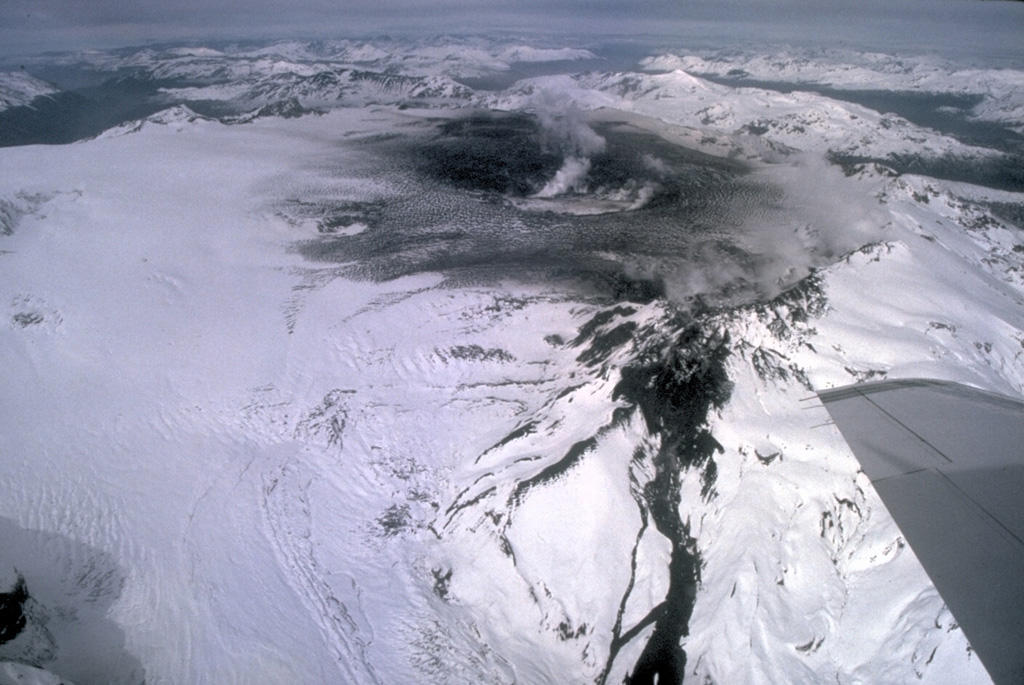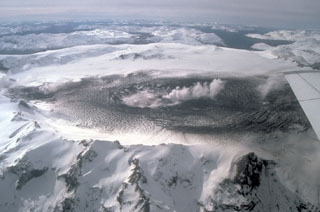Image GVP-04932

Chile's second largest explosive eruption of the 20th century began on August 8, 1991 from a fissure cutting the western rim of Cerro Hudson caldera. The paroxysmal phase began on August 12 and was sustained for three days, producing ashfall that collapsed roofs near the volcano and fell in the Falkland Islands, 1000 km to the SE. Pyroclastic flows were mostly restricted to the caldera floor. The dark streak at the lower right-center is a lava flow that traveled 4 km down the WNW flank from the west caldera rim fissure.
Photo by Norm Banks, 1991 (U.S. Geological Survey).
![]() This image is made available as a Public Domain Work, but proper attribution is appreciated.
This image is made available as a Public Domain Work, but proper attribution is appreciated.

Cerro Hudson
